Scientists and Thinkers of the World during the Reign of King Rama IV
The Pioneer
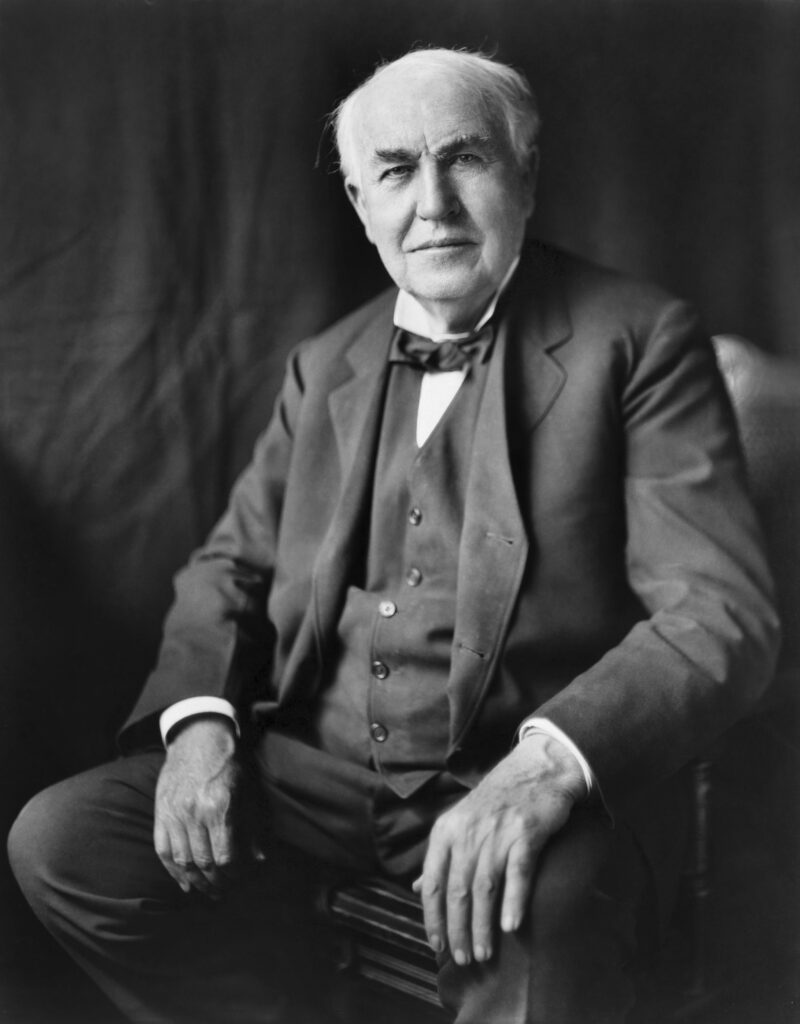
Thomas Alva Edison
A great scientist whose inventions changed the world, he is renowned as one of the most prolific inventors in the United States. With over 1,000 inventions credited to his name, he revolutionized everyday life with groundbreaking innovations such as the electric light bulb, phonograph, motion picture camera, amplifier, gramophone, and sound recorder. These creations brought immense convenience and had a profound impact on society. In addition to inventing new devices, he also enhanced existing technologies, making significant improvements to the telephone and telegraph, increasing their efficiency and usability. His inventive genius not only transformed the way people lived but also laid the foundation for future technological advancements that continue to benefit humanity to this day.
Table of content
Who starts working at the age of 12?
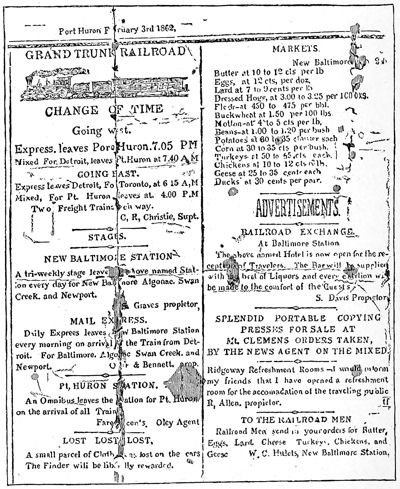
Grand Trank Herald
Thomas Alva Edison was born on February 11, 1847, in Milan, Ohio, United States of America. From a young age, Edison showed signs of being an inquisitive and observant child, always curious about how things around him worked. His insatiable curiosity sometimes led to trouble; for instance, he once nearly burned down the entire town after setting fire to a barn. His father enrolled him in elementary school in Port Huron, but Edison attended formal schooling for only three months before refusing to go back. After leaving school, his mother took on the role of his teacher, providing him with home education. Within just two years, Edison had learned to read and write fluently. Among all subjects, he was most fascinated by science, experiments, and inventing new devices. At the age of 10, he built his own laboratory at home, spending countless hours conducting experiments. By the time he was 11, Edison had successfully built a working telegraph machine based on Samuel Morse’s designs. Driven by a desire to fund his scientific pursuits, Edison started working at the age of 12. His first job was as a newspaper boy on the Grand Trunk Train Company’s Port Huron-Detroit line. After working for some time, he saved enough money to purchase a small printing press. With this press, Edison launched his own newspaper, “Grand Trunk Herald,” where he took on every role himself—owner, editor, writer, and salesman.
The Wizard of Menlo Park
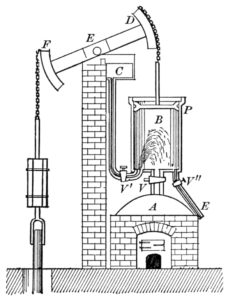
First model of Thomas Edison’s phonograph, 1877
In his spare time away from his regular job, Edison invented various devices, such as a vote recorder for use in legislative assemblies. However, when the device was marketed, it failed to gain popularity. Unfazed, Edison went on to invent a stock ticker machine and a two-way telegraph, both of which were highly successful during testing. He presented these inventions to the Western Union Telegraph Company, which subsequently hired him to improve Alexander Graham Bell’s telephone to enhance its performance. Edison’s improved version of the telephone became widely accepted and commercially successful. However, beyond the financial rewards, Edison gained a far more significant insight during the process of refining the telephone. He accidentally discovered that the vibrations of sound within the telephone could be harnessed to invent a phonograph, which operated on a similar principle—when sound waves passed through, they caused a metal diaphragm to vibrate, thereby reproducing the sound. In 1877, Edison invented the phonograph, which, upon its release, was met with immense public enthusiasm. Edison continued to refine and enhance the phonograph, making it one of his most iconic and celebrated inventions.
One of Edison’s other notable inventions was the phonograph, which consisted of a grooved cylindrical drum wound in a spiral. This cylinder would rotate via a hand crank mechanism. On both ends of the cylinder, there were small tubes equipped with diaphragms and needles. Edison sent the design and instructions to John Kruesi, his chief assistant at the workshop, to construct the device. When Kruesi presented the finished machine to Edison, he still did not fully understand its intended function.
Edison demonstrated its capability by speaking into the cylinder, saying “Mary had a small sheep,” and then turned the crank to replay the recording. To everyone’s astonishment, the machine repeated the phrase back: “Mary had a small sheep.” This remarkable demonstration left the factory workers in utter amazement. Among all his inventions, Edison considered the phonograph his personal favorite. He later improved upon the device, evolving it into the automatic telegraph repeater.
When these two inventions—the phonograph and the telegraph repeater—were publicized in newspapers, Edison’s name rapidly gained widespread recognition. The groundbreaking nature of his inventions earned him significant acclaim and established his reputation as a genius inventor.
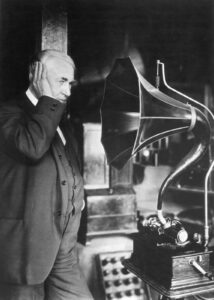
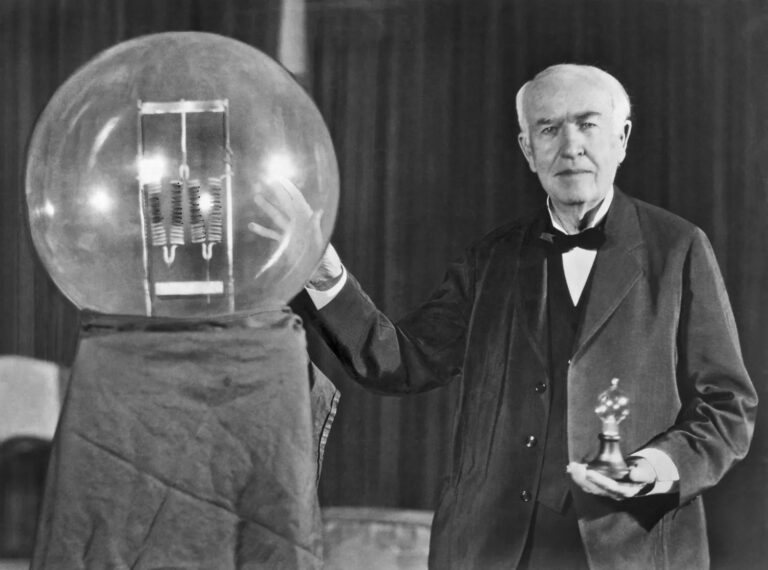
Inventions That Changed the World
One of Edison’s most renowned inventions was the electric light bulb. Before his innovation, Sir Humphry Davy had experimented with electricity by connecting wires to the positive and negative terminals of a large battery. When the wire ends were brought close together, electric arcs would jump between them, emitting a bright light. Davy later conducted this experiment in a vacuum and invented the “Arc Light.” However, the arc lamp’s filament couldn’t withstand high temperatures, resulting in a very short lifespan.
Building upon Davy’s concept, Edison sought a filament material that could endure high heat. He tested over 10,000 different substances to find a suitable filament for a long-lasting light bulb. In 1879, Edison discovered that carbonized cotton thread, when placed in a vacuum, could glow brightly for up to 45 hours without burning out. This invention was named the “Incandescent Electric Lamp.” Despite the breakthrough, Edison’s light bulb didn’t become widely popular immediately due to the high cost of electricity at the time.
Edison returned to New York and founded the Edison Electric Light Company to develop power generators. He improved Michael Faraday’s dynamo and named it “Beauty Mary Ann” after his wife. Edison then laid electrical wiring across New York City, making electricity accessible to the public. He became a pioneer of the U.S. electric utility industry. Additionally, he invented devices like the electric meter and grounding systems to enhance electrical safety. His business flourished with the sales of light bulbs and electric power.
Edison, the Father of Motion Pictures?
Later, in 1889, Edison invented a device for capturing images, initially applying the same principle used in his phonograph. At first, the images recorded could not move, but by 1912, he had improved the design to allow moving images, which led to the development of motion picture cameras. In addition to the camera, Edison also created a projector for displaying films. He then combined his phonograph technology with film projection, which resulted in the first talking motion picture ever made.
Edison hired Broadway actors to perform in a film called Synchronized Move, marking a milestone in cinema history. His contributions didn’t stop there; Edison also invented various other devices, including the phonograph record player, the amplifier, the duplicating machine, and the nickel-iron battery. Each of these inventions significantly enhanced everyday life and had a lasting impact on the fields of sound recording, telecommunications, and portable power.
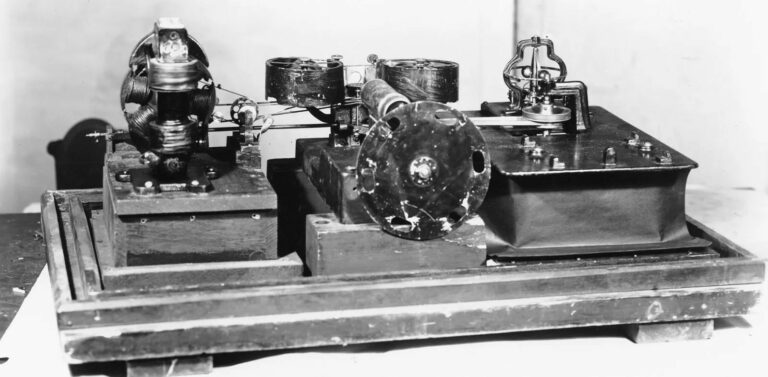
First model of Thomas Edison’s phonograph, 1877
Later Years of Life
Edison dedicated his entire life to inventing and innovating various tools and devices. He rested only 3-4 hours a day. His relentless hard work eventually took a toll on his health, leading to illnesses such as gastritis, diabetes, and uremia. Even when his condition improved, he refused to rest and returned to his intensive work routine, causing his health to deteriorate once again. This led to his passing on October 18, 1931, at the age of 84. His passing was commemorated and remembered with national reverence, as he was honored as a pivotal figure who revolutionized the electrical industry of the United States.
Lastly, for those interested in exploring more about Thomas Alva Edison, whether it be his specialized scientific works or general knowledge about his life and theories, you can find recommended readings and articles on Thomas Alva Edison’s books at: https://kmutt.me/book-thomas
พันธลักษณ์. (2546). นักวิทยาศาสตร์เอกของโลก. กรุงเทพฯ: บ้านหนังสือ 19
Money Buffalo. (2565). ส่องประวัติ โทมัส อัลวา เอดิสัน เจ้าพ่อนักประดิษฐ์ แต่ไม่ได้ผลิตหลอดไฟสำเร็จเป็นคนแรก. [Online]. Available: https://www.moneybuffalo.in.th/history/thomas-alva-edison [31 มีนาคม 2566]


